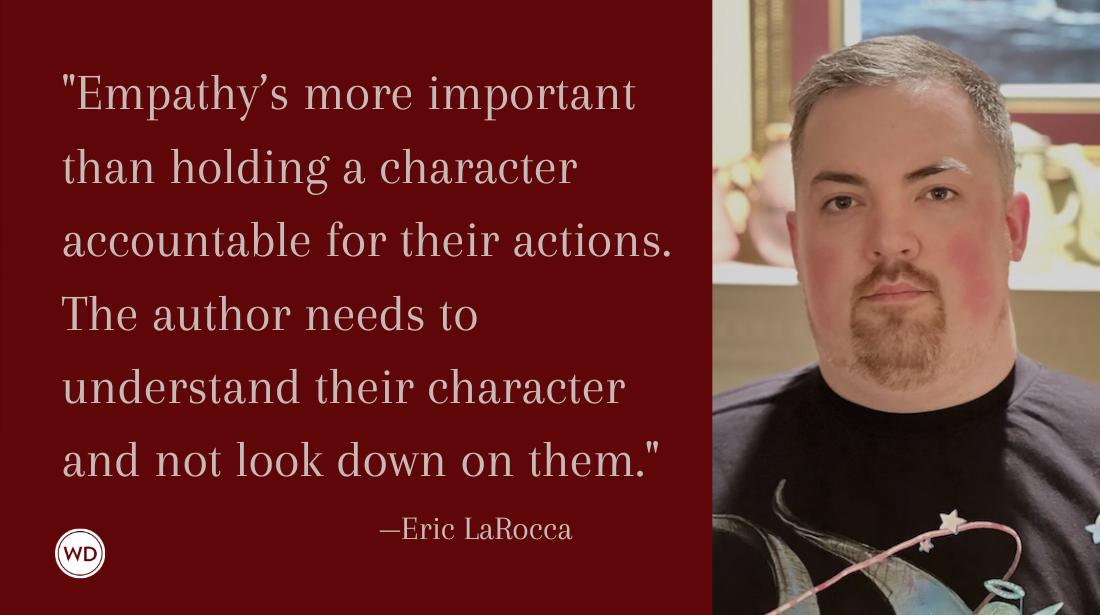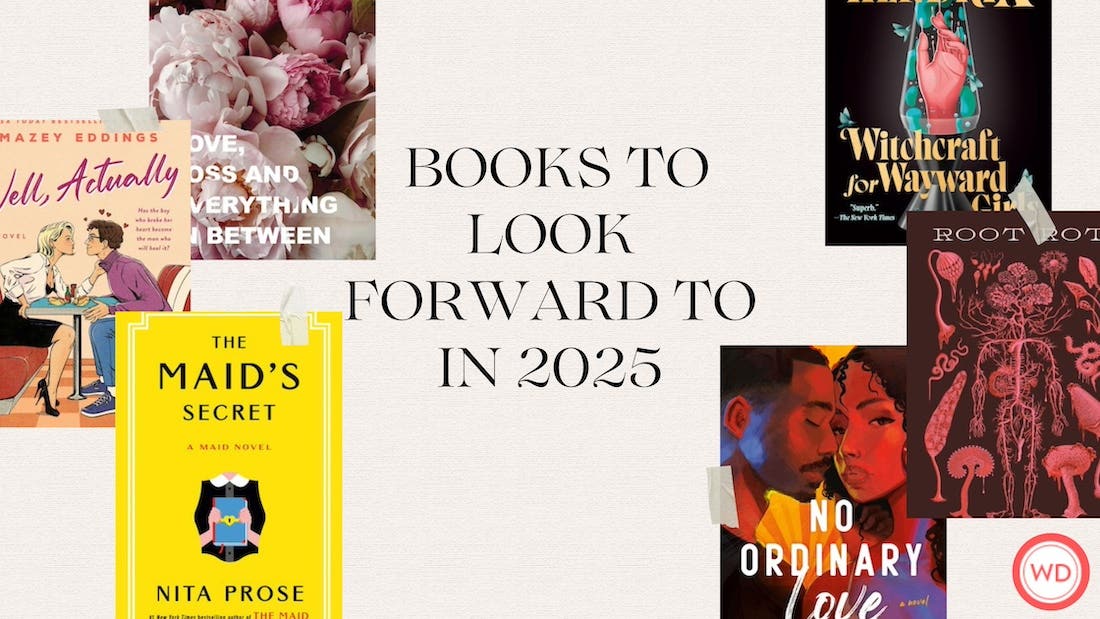Mental Health in Storytelling: Creating Compelling Neurodiverse Protagonists
With a hope for their readers to find themselves among the pages, O.E. Tearmann shares their experience with writing compelling neurodiverse protagonists without succumbing to harmful stereotypes.
Do a quick web search for mental health tips and you’ll immediately be swamped with sayings like “You live most of your life inside of your head. Make sure it’s a Nice Place to Be!” It’s easy to get annoyed with a glib statement like this, especially if you’re wrestling your own demons. Sometimes you want to growl “Do you know how damn hard that is?!”
Trust us, we know. We’re two authors wearing the O.E. Tearmann name as a trench coat, and both of us struggle with our own mental health challenges: anxiety, depression, ADHD, and intergenerational trauma. So, when we started writing together, we didn’t even think about whether to put neurodiverse characters as the main protagonists on the page. We did it because we were writing the experiences of ourselves, our communities, and our world.
So many people are neurodiverse in this world. And yet it’s still something a lot of modern cultures don’t talk about. The conversation is getting better in the U.S., but it’s still not as normalized as it should be. This makes it even more important for us to include it as a central theme in our writing.
Mental health is central to our Aces High, Jokers Wild series. As the series began, we focused the story on Aidan Headly as our main protagonist. As a young trans man dealing with a history of abuse on top of congenital anxiety and depression, Aidan has a lot on his plate. Throughout the series, he learns not only how to juggle his responsibilities with his own internal state, but how to find better ways to cope when his internal landscape gets rocky. As the series progresses, he’s not only coping with his own neurodivergence successfully, but teaching others to do the same.
This is key for us: A mental condition is not something that goes away, it’s something you learn how to work with and manage in healthy ways. We really wanted to depict that, since there’s still a really common and unhelpful misconception that mental illness can be “cured.”
Too many stories “cure” the neurodivergence of their characters in the end, and that sets up a really unhealthy need to look for ways to stop being “broken” in neurodivergent people. This is what we wanted to show our readers: You’re not broken. You’re wired differently. And there are things you can do to work with that. You can be neurodivergent and have a good life. Here’s a character who can show you how to do it.
When writing characters dealing with mental health or neurodiversity, you’re walking through a minefield of harmful storytelling tropes. There’s the cultural assumption that the mentally ill are violent, sometimes called “The Crazy Crank” trope. The truth is that people with mental illnesses are more likely to be the victims of violence than its perpetrators. One study found that men with mental illness were more than twice as likely to be subjected to violent crime than their neurotypical cohort; for women, the risk was tripled.
IndieBound | Amazon
[WD uses affiliate links.]
There’s the “Magical Savant” trope, which makes a neurodiverse character “worthy” on account of some amazing talent and essentially invalidates their worth as a human being in their own right. Not cool. And there’s the “Tortured Soul” trope, which says that in order to create great works, great people must suffer through their mental health problems and leave them untreated.
So how did we write a story that pushed back against these tropes? We wrote from personal experience. In order to make that effective, we had to do our research, and we had to get it right. At first, we drew on our own experiences: Olivia’s traumas and hyperinsulinemia fed a lot of the characterization for Tweak, and her family issues with class and worth shaped Kevin. E.S.’s body dysphoria and depression informed the writing of Aidan’s character, and their feelings of social isolation and the ace perspective shaped Naomi. But to do things right, we had to reach beyond ourselves. We’d seen way too much bad representation of neurodiversity, and we refused to add to the opinions that weigh neurodiverse people down.
We drew on the knowledge of our beta readers: autistic and trans folks, as well as an expert in disabled rights. We read books like Traversing Gender: Understanding Transgender Realities, by Lee Harrington, The Writer’s Guide to Medicine, by Natalie Dale, and articles like “Therapist In Your Pocket? The Surge In Mental Health Apps,” by Lucy Nalpathanchil and Sujata Srinivasan. We brainstormed what we hoped we’d see in the future. After all, we’re writing science fiction.
Why can’t we show improvements to mental health technology and coping mechanisms a hundred years from now? An effective AI program that could help you with your mental health whenever you turned it on? Yes please. A medication that could stop a terrible experience from becoming PTSD? Yup! We’re writing it. A program that tells you your cortisol is high? Let me have it!
We wrote with empathy and showed the healthy evolution of coping strategies in specific characters. In addition to writing Aidan’s issues from the internal and external perspective, we’ve also written characters who learn to handle trauma, discrimination-based PTSD, and other externally rooted struggles. A sexually abused character is supported as she very slowly begins to date a supportive partner. A child who loses a parent is supported in his grieving. A young person who arrives traumatized by a life of violence fearful and aggressive is shown that she no longer needs to protect herself, because she will be safe as part of the team. It takes years and several books in some cases, but each character becomes their best selves with the support their team offers.
Through the issues our characters work on, we explore one of the things that is shamefully neglected in our national conversation on mental health: Though every one of us must take responsibility for our own actions and our own coping strategies, we need to talk about the fact that we are living in a system that traumatizes and damages many of us. When we change the system that we live in, we can ameliorate this damage.
When you know you’ll be mentally and emotionally supported by your community, it’s a lot easier to manage your own mental state. When you’re not constantly worrying about whether your kids will eat that night or whether you’re going to get screamed at by your superior, you’re a lot more likely to be able to cope with your levels of anxiety. And when you know that nobody is going to call you worthless because your mental health isn’t letting you be your best this week, depression has a harder time keeping its grip on you.
We wrote our characters showing one another support, mutual aid, and healthy forms of interaction. And we showed them putting in the work to heal, recover, and begin to thrive. We all need to see that work being done in the stories we read, because so many of us need to do the work right now. In fact, the pain we saw around us was part of what sparked this project.
We decided we’d write our deepest fears for our culture out and turn that writing into a story that would keep the hopes of people like us alive. We would set our characters down in the world we feared: a world of corporate control, paternalistic social structures, and permissive economic structures that allowed companies to own their workers from the cradle to the grave. And then we’d show readers how to hold your head high in this dark world.
We’d fill these stories with wit and irreverence, punk rock, and pranks. We'd write about a found family showcasing the resolve to light a candle in the dark and fight for a world worth living in. We would write in coping strategies for anxiety and depression, both good and bad, and show them working or failing. In the backs of the books, we’d include a bunch of resources for LGBT and neurodiverse folks; when one of our readers turned to the last page of a book telling them that they had the right to ask for help and the ability to make change, we wanted there to be ways to get started right there in front of them. (If you want to take a look at those resources, they’re available at oetearmann.com/resources.)
So, we did the work. We did the research. We vetted the resources. And as we’re finishing up book six, we’re still doing it. It’s gotten more complex as we’ve shifted the series’ focus to Tweak, a neurodivergent woman of color with C-PTSD. We’ve had to get a lot more accurate in our research. She’s dealing with a lot of touchy subjects, and it’s essential to get things right.
Has it been worth it?
Short answer: yes.
Writing these stories helped us. It helped us to say to ourselves, “Hey, even if the absolute worst happens in America? Someday, in some way, it will get better.”
It helped readers. We’ve gotten emails and had conversations with readers about how grateful they are to see characters like themselves be heroes on the page. And it helped, just a little, change the conversations around us.
Just like our own mental health, we have no immediate cure for the way the world is. But just like our own mental health, we can do small things every day to make it better. To use another glib phrase: little by little, one travels far.
O.E. Tearmann is a pen name for a writing duo: Olivia Wylie and E.S. Argentum. Together, they write a possible future full of scrappy resolve, diverse characters, and the power to stand up and work for a better world. You can read more at oetearmann.com. The “O” in O.E. Tearmann, Olivia Wylie (she/her), is a bisexual bi-racial horticulturist who specializes in the restoration of neglected gardens. When the weather keeps her indoors, she enjoys researching and writing about the plant world, the future, and the complexities of being human. Her solo work focuses on illustrated nonfiction showcasing the stories of the plant world, though she likes to throw out a short story for anthologies now and then. She lives in Colorado with a very patient husband and a rather impatient cat. Her solo works appears at leafingoutgardening.com, in the We Cryptids anthology, the Rosemary anthology, and a number of Colorado retailers. As the “E” in the O.E. Tearmann writing duo, E.S. Argentum (they/them) brings the same passion for diverse, character-driven stories seen in Aces High, Jokers Wild to their solo work. E.S Argentum’s fantasy and scifi romances center on GLBTQ+ relationships. They have short stories published in multiple anthologies under the pseudonym of Emily Singer, including Rocky Mountain Fiction Writers’ Crossing Colfax and Ultimate Power, from Northwest press. When they’re not writing, they’re generally found playing video games, having existential crises, or napping with their cat. Their work can be viewed at argentumbooks.com.








